A Guided Tour Around D5705
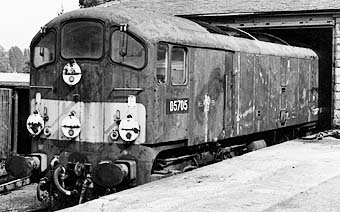
This was the general condition of D5705 upon arrival at Matlock in April 1986. The only work undertaken between arrival and this photograph was the repainting of D5705 over the departmental number TDB968006, plus the removal of the roof panels for restoration.
D5705 was the last diesel locomotive to wear *original* green livery and BR lion and wheel totems. It is a shame that she could not run have been able to run in this way in preservation as the locomotive would have looked hell-fire pulling trains in this condition. Sadly, the deteriorating bodywork and the very long term nature of the mechanical restoration prevented this fantasy from becoming reality.
The following selection of photographs were taken in 1988, showing the locomotive in what is ostensibly un-restored condition.
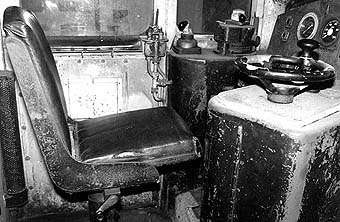
The Driving Controls at No. 1 end. Notice the unique 'wheel' shaped power handle.
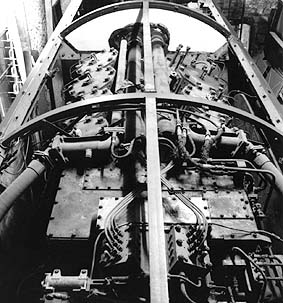
The Crossley HSTVee 8 - 2 stroke diesel engine that is rated at 1200hp at the relatively slow-running maximum engine speed of 625 rpm. It is believed that the engine was last fired up in 1976, although this gen is unsubstantiated.
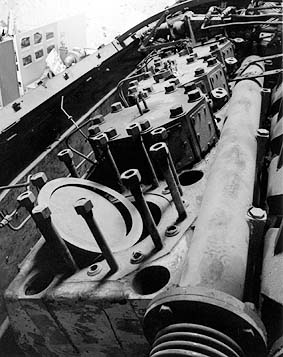
A Close-up of the cylinder heads of 'B' Bank, taken from the driving end. Cylinder head on 'B4' has been removed for inspection. Sadly, water ingress subsequently has caused problems, leading to seizing of the engine. It is hoped that the damage caused is not life threatening!
However, the nearest user of a Crossley two-stroke Vee engine just happens to be in Australia! Before the Co-Bo's were built, Crossley supplied similar engines for a fleet of 3ft 6" gauge mainline locomotives exported to Western Australian Government Railways. It seems that the engine problems experienced by BR were overcome in Australia. By the mid 1980s, the locomotives were only just beginning to be withdrawn from service, but is unknown if any remain in service or indeed how many even survive.
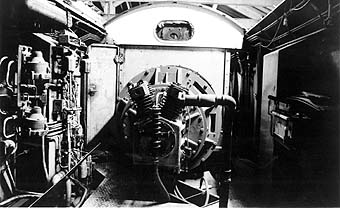
The main and auxilliary generator, plus the vacuum exhauster. On the left is the brake valve gear. The exhauster is life-expired and must be replaced. It is thought that a smiliar model was used on the early series of AC electric locomotives and Class 31s. The rounded hole in the bulkhead above the generator is the exhaust outlet from engine. This would lead into the silencer that is normally situated above the generator. It is hoped that upon completion, the locomotive can run for a time without this in situ!
This photograph was only possible due to the removal of the train-heating boiler which was subsequently scrapped.
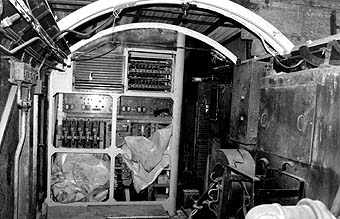
The electrical cubical upon commencement of restoration work. The round shape to the right of the gangway is the traction motor blower duct.
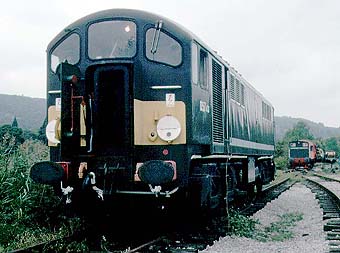
The No. 1 end, pictured at Darley Dale down yard. The communication gangway doors are seen open, showing the bellows which allowed two locomotives to be connected to one another which enabled the second man to gain access to the train heating boiler in the trailing locomotive. The practice of crawling from one locomotive to another via this method was quickly phased out! Most gangway doors on all classes of locomotives were quickly welded shut where they had them to prevent draughts in the cabs, but D5705 escaped this treatment.
It is believed that D5705 possesses the last remaining operational bellows gangways - unless you know different!






